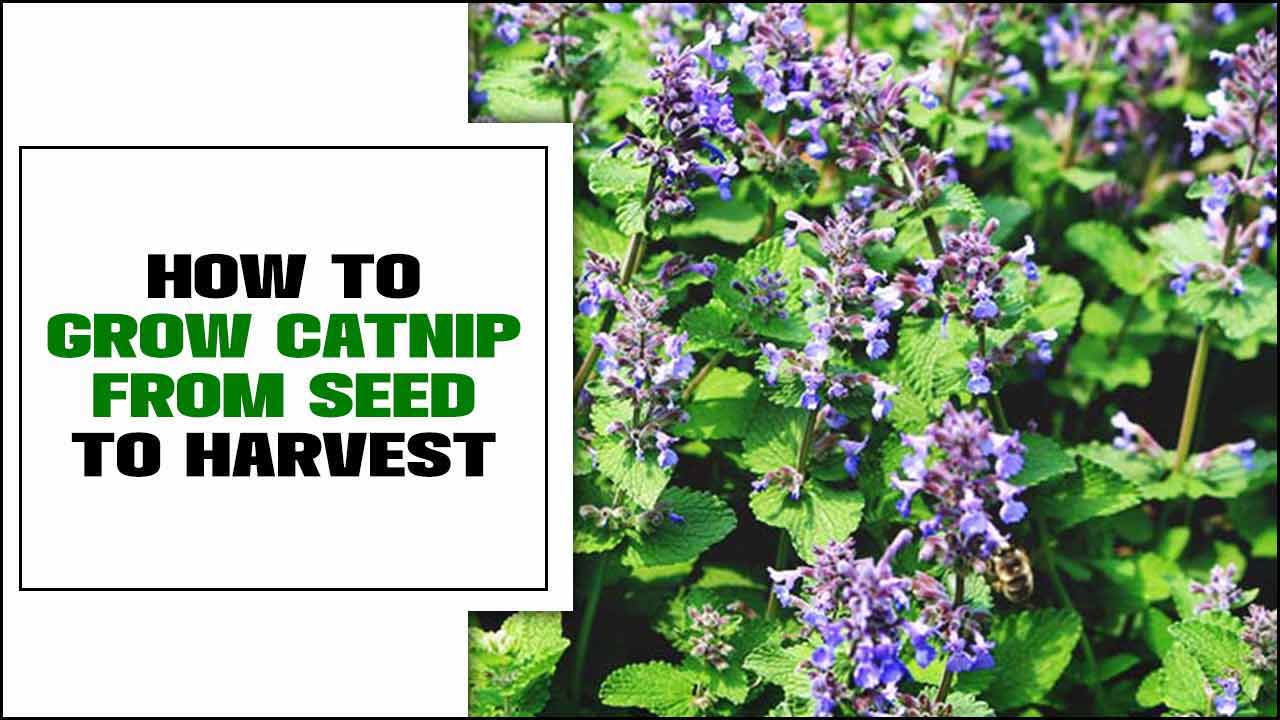A consistent garden irrigation schedule is your secret weapon for healthy, vibrant plants with minimal fuss. Learn to water smarter, not harder, and watch your garden thrive effortlessly.
Growing a beautiful garden can feel like a lot of work, right? You love the idea of fresh veggies or bright blooms, but keeping everything alive can be tricky. Watering, especially, seems to be a constant question mark. Too much? Too little? It’s enough to make anyone feel a bit overwhelmed. But what if I told you there’s a simple way to get it right almost every time? Establishing a garden irrigation schedule is the key to effortless growth. It’s like giving your plants a predictable routine they love, leading to stronger roots and happier greenery. Get ready to say goodbye to watering worries and hello to a flourishing garden!
Understanding the Basics of Garden Irrigation
Before we dive into creating your perfect watering schedule, let’s get a handle on why watering is so crucial for plants. Think of water as the lifeblood of your garden. It’s essential for photosynthesis, which is how plants make their food. Water also helps transport nutrients from the soil to all parts of the plant, keeps leaves firm and upright, and even helps regulate their temperature. When plants don’t get enough water, they wilt and struggle to grow. Too much water can be just as harmful, leading to root rot and fungal diseases because those roots can’t breathe.
The goal of any good irrigation schedule is to provide the right amount of water at the right time. This means understanding your plants’ needs, your soil type, and the local climate. It’s not just about splashing water around; it’s about building a sustainable system that helps your plants flourish.
Key Factors Influencing Your Irrigation Schedule
Creating a “set it and forget it” schedule for watering isn’t quite realistic, as a garden is a dynamic, living system. Several factors will influence how often and how much you need to water. Understanding these will make you a much more intuitive and effective gardener.
1. Plant Type and Their Water Needs
Different plants have vastly different thirst levels. Succulents and drought-tolerant natives, for instance, prefer drier conditions and can handle long periods with little water. On the other hand, leafy greens, ferns, and many flowering annuals are thirsty plants that need consistent moisture. Root vegetables also have specific needs, especially as they develop their edible parts.
During the initial establishment phase for new plants – whether they are seedlings or newly transplanted shrubs – they will require more frequent watering. This helps their root systems take hold. Once established, their watering needs might change.
2. Soil Type and Drainage
The kind of soil you have plays a massive role in how long it retains moisture. These are the general categories:
- Sandy soil: Drains very quickly. Water tends to run right through it, meaning you’ll need to water more frequently, but perhaps less volume each time.
- Clay soil: Holds onto water for a long time. It can become waterlogged easily, so you’ll need to water less often, but be generous when you do. Ensure good drainage is in place.
- Loam soil: This is the ideal gardener’s soil – a good balance of sand, silt, and clay. It retains moisture well but also drains effectively.
You can test your soil by grabbing a handful; if it crumbles easily, it’s likely loamy. If it forms a compact ball that doesn’t easily break apart, it’s probably clay. If it feels gritty and falls apart immediately, it’s sandy.
3. Weather and Climate
This is perhaps the most variable factor. Hot, sunny, and windy days will dry out your soil much faster than cool, cloudy, or humid days. Rainfall is, of course, a natural irrigator! If you get a good soaking rain, you might be able to skip a scheduled watering or two. Conversely, during a heatwave, you might need to increase watering frequency. Knowing your local climate patterns is key.
Consider incorporating weather-forecasting tools into your routine. Many gardening apps and websites offer local weather predictions that can help you fine-tune your watering schedule weekly.
4. Sunlight Exposure
Plants in full sun will generally need more water than those in partial shade or full shade. The sun’s energy not only helps plants grow but also evaporates water from the soil surface and transpires water through the leaves (a process called evapotranspiration). A plant basking in direct sun all day will lose water at a much higher rate than one enjoying dappled shade.
5. Container vs. In-Ground Gardening
Plants grown in containers, especially those on patios or balconies that are exposed to more sun and wind, tend to dry out much faster than plants in the ground. The smaller volume of soil in pots provides less moisture reserve, so container gardens often require more frequent attention with their watering schedule.
How to Determine When to Water
Relying solely on a calendar can lead to over or under-watering. The best way to know if your plants need a drink is to check the soil moisture directly. Here are a few foolproof methods:
1. The Finger Test
This is the simplest and most reliable method for beginners. Simply stick your finger about two inches (about the length of your first knuckle) into the soil near the base of the plant. If the soil feels dry at that depth, it’s time to water. If it feels moist, you can wait another day or two.
2. Visual Cues
Observe your plants. Wilting leaves are a clear sign of thirst, though it’s important to act before drooping becomes severe. Conversely, yellowing leaves can sometimes indicate overwatering, so it’s good to combine visual cues with the finger test. Healthy plants generally have firm, vibrant foliage.
3. Moisture Meters
These inexpensive gadgets can take the guesswork out of watering, especially for those with many plants or large gardens. You simply insert the probe into the soil, and the meter will indicate the moisture level. They’re a great companion to the finger test.
Creating Your Garden Irrigation Schedule
Now that we understand the “why” and “how” of checking moisture, let’s build a schedule that works for you. Remember, this is a guideline, not a rigid rulebook. The goal is consistency, but also flexibility.
Step 1: Understand Your Plants’ Needs
Group plants with similar watering requirements together if possible. For example, a bed of succulents will need less water and less frequent watering than a bed of thirsty annual flowers. Consult plant tags or do a quick online search for the specific watering needs of each type of plant you’re growing.
Step 2: Assess Your Soil
As discussed, your soil type dictates how quickly water is absorbed and retained. If you have sandy soil, plan for more frequent, lighter watering. For clay soil, water less often but ensure the water penetrates deeply. If you have loam, you’re in a good middle ground.
Step 3: Consider the Weather
This is where your schedule becomes dynamic. Here’s a general guideline:
- Hot, Dry, Windy Days: Water daily, or even twice a day for containers.
- Warm, Partly Cloudy Days: Water every 2-3 days.
- Cool, Cloudy, Humid Days: Water every 4-7 days, or as indicated by the finger test.
- After Rainfall: Check soil moisture before watering. You may not need to water for several days.
Step 4: Determine Watering Frequency and Duration
Instead of focusing on a strict daily schedule, aim for a frequency that makes sense for your conditions, and then water deeply when you do water. Deep watering encourages roots to grow deeper into the soil, making plants more resilient.
Frequency: This might be daily for thirsty plants in containers during a heatwave, or once a week for established plants in well-draining soil during moderate weather. For new plantings, daily checks are crucial for the first few weeks.
Duration: When you water, how long should you let the water run? This depends on your irrigation method and soil type. For sprinklers, it might mean running them until about an inch of water has been applied. For manual watering, it means letting the water soak in until the soil is moist several inches deep.
Step 5: Choose the Best Time to Water
The best time to water your garden is typically in the early morning. Here’s why:
- Reduces Evaporation: Cooler temperatures mean less water is lost to evaporation, so more water reaches the plant roots.
- Helps Prevent Disease: Watering in the morning allows foliage to dry off throughout the day, reducing the risk of fungal diseases.
- Plants are Ready for the Day: Watering in the morning ensures plants are well-hydrated to face the heat of the day.
Late evening watering can also be an option if morning isn’t feasible, but be mindful of disease risks if leaves remain wet overnight. Avoid watering during the hottest part of the day, as much of the water will evaporate before it can be absorbed.
Sample Garden Irrigation Schedules
These are simplified examples. Your actual schedule will need constant adjustment based on the factors we’ve discussed. Use these as starting points.
Schedule for Vegetable Gardens in Loam Soil
Vegetables generally need consistent moisture, especially during fruiting. In average (loamy) soil, with moderate weather:
- Established Plants: Water thoroughly every 2-3 days.
- New Plantings/Seedlings: Water daily, checking soil moisture twice a day if it’s hot.
- During Heatwaves: Increase to daily watering, checking moisture 2 inches down.
- After Heavy Rain: Skip watering for a few days, then check moisture levels.
Schedule for Herb Garden in Containers
Herbs in pots dry out quickly. Mediterranean herbs like rosemary, thyme, and lavender prefer to dry out between waterings. Others like mint and basil like consistent moisture.
- Thirsty Herbs (Basil, Mint): Water daily, or when the top inch of soil feels dry.
- Drought-Tolerant Herbs (Rosemary, Thyme): Water thoroughly every 3-5 days, or when soil is dry 2 inches down.
- General Container Herbs: Check daily using the finger test. Water when the top 1-2 inches feel dry.
- During Heat: Water most herbs daily.
Schedule for Flower Beds with Mixed Plants
This requires careful observation and grouping if possible. Let’s assume a mix of annuals and some perennials in loamy soil.
- Established Perennials: Water deeply once or twice a week.
- Annual Flowers: Water every 1-3 days, depending on heat and bloom stage. Newly planted annuals need daily attention.
- Dry Spells: Increase frequency for all plants, especially annuals.
- Sensitive Plants: Monitor plants known to wilt easily (e.g., petunias, impatiens) and focus on them.
Irrigation Methods and How They Affect Scheduling
The way you water directly impacts not only the efficiency of your schedule but also how deep the water penetrates and how surface evaporation is managed. Different methods require different approaches to frequency and duration.
1. Hand-Watering (Hose or Watering Can)
Pros: Affordable, precise control over where water goes, great for small gardens and individual plants.
Cons: Time-consuming, can over- or under-water if not careful, may not deliver water deeply enough for large areas.
Scheduling Impact: Requires vigilant monitoring. You must physically check each plant or area and apply water directly. Duration is key here – let the water soak in until the soil is moist several inches down. For larger areas, split them into zones to water systematically.
2. Sprinkler Systems
Pros: Can cover large areas efficiently, automated options save time, good for lawns and established beds.
Cons: Can be wasteful due to evaporation and wind drift, may not deliver water evenly, can promote fungal diseases on foliage if used improperly, requires installation and potentially plumbing. The EPA WaterSense program offers great tips on efficient outdoor water use, including irrigation practices.
Scheduling Impact: Once set up, sprinklers can be programmed. The critical factor is duration and frequency. You need to run them long enough for water to penetrate deeply (aim for 1-2 inches of water per week total, including rainfall) but not so long that you cause runoff. Check the soil with a screwdriver or probe after a run cycle to see how deep the water went. Adjust run times accordingly. For example, if sprinklers apply 0.5 inches per hour, you might need to run them for 2-4 hours per session, depending on your plants’ needs and soil type. Early morning is crucial to minimize evaporation and disease.
| Sprinkler Type | Best For | Scheduling Consideration |
|---|---|---|
| Oscillating Sprinklers | Rectangular lawn areas | Water in short bursts to prevent runoff. Check for even coverage. |
| Impulse Sprinklers | Larger, irregular areas | Adjust arc and distance. Can be powerful; watch for soil erosion. |
| Soaker Hoses | Garden beds, hedges, rows | Lay directly on soil. Efficient for delivering water to roots. Water for longer durations (30-60 mins) at lower pressure. |
| Drip Irrigation | Individual plants, raised beds, containers | Highly efficient, minimizes evaporation. Water for shorter, more frequent cycles, but let it run longer than sprinklers to penetrate soil. Typically 30 minutes to a few hours, several times a week or daily for containers in heat. |
3. Drip Irrigation Systems
Pros: Highly efficient (up to 70% more water-efficient than sprinklers), delivers water directly to root zones, reduces weed growth, conserves water, ideal for specific planting areas and drought-prone regions. The Irrigation Association provides excellent resources on water-efficient irrigation.
Cons: Initial setup can be complex and costly, emitters can clog, requires regular maintenance, not ideal for large lawn areas.
Scheduling Impact: Drip systems allow for very precise watering. You can schedule them to run for specific durations (e.g., 30 minutes to 2 hours per zone) and frequencies (e.g., every other day, daily, or multiple times a day for very thirsty container plants). The key is that the water is applied slowly and directly to the roots. You’ll often water for longer durations per session than sprinklers but less frequently overall, allowing water to saturate the root zone without runoff. Adjust based on emitter flow rate and soil type.
4. Soaker Hoses
Pros: Easy to install, relatively inexpensive, delivers water directly to the soil surface, good for garden beds and rows.
Cons: Can be less durable






